How far have we progressed in our green energy goal?
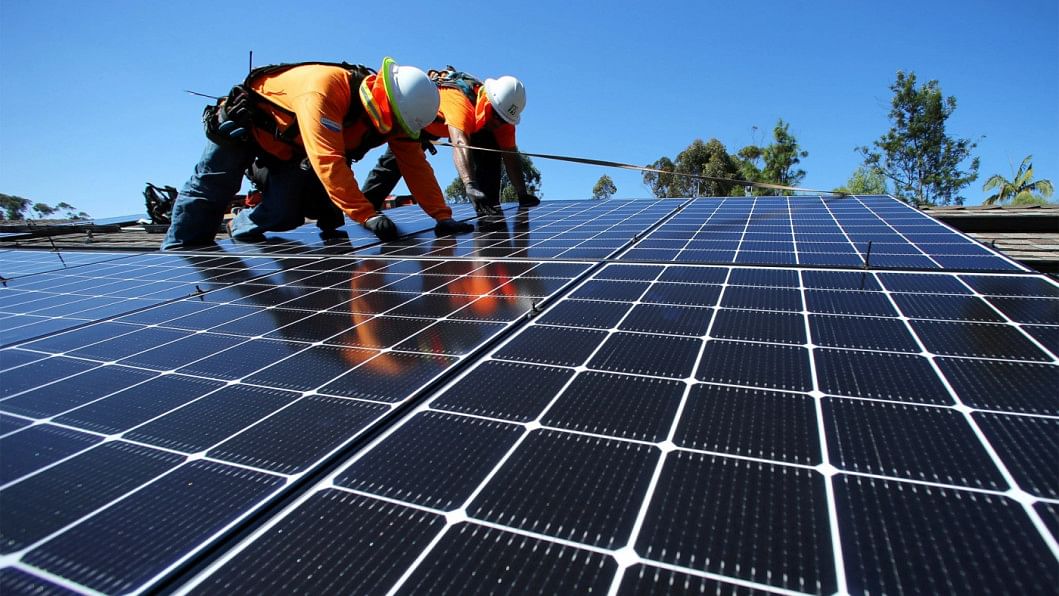
Bangladesh, along with the rest of the world, has come to a point where full transition to the use of green energy is one of the only options left to tackle global warming and impacts of climate change. Corruption-free green energy can also be an alternative to oil and gas imports – especially in the face of the global energy crisis. As per the National Solar Energy Roadmap 2021-41, Bangladesh can produce 20,000 megawatts (MW) of green electricity by 2041 with a medium-scale solar electrification strategy – despite land scarcity. The capacity can be further expanded to 30,000MW with a high-end solar model with reclaimed five percent land of river basin development projects, industrial rooftops, and other unused land.
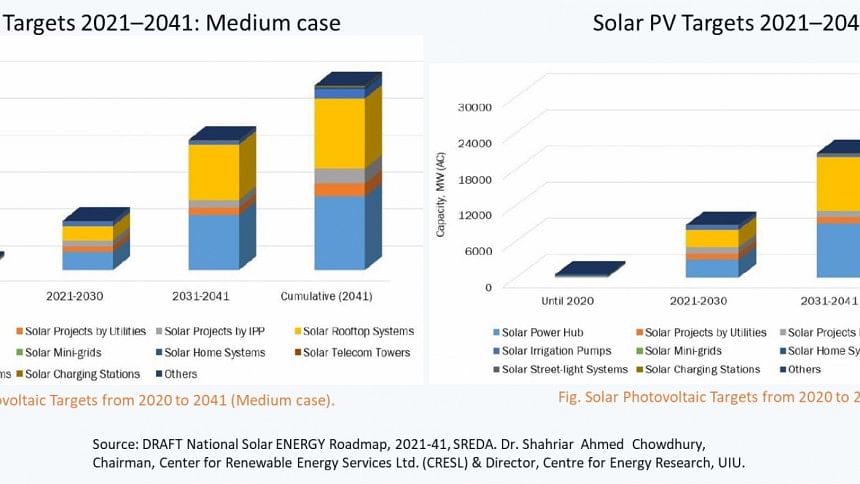
According to the government's Power System Master Plan (PSMP) 2016, renewable power should have constituted at least 10 percent of our total capacity by 2021. As per the Sustainable Development Goals (SDG 7), least developed countries (LDCs) must have 12 percent of their total electricity consumption from renewable sources. As a candidate for graduation out of the LDC status, it is prudent for Bangladesh to generate 17 percent of its electricity from renewable sources.
The possibilities that solar power offers
Bangladesh's solar irradiance is much better than the global average (about 1.43 times that of the Netherlands). In the isolated islands of Bhashan Char, Char Fasson, Bhola, Manpura, and others in the Barishal-Noakhali-Chattogram region, it is possible to set up a sustainable, cost-effective model of renewable power generation, and a community grid with a combination of solar-wind power as an alternative to expensive electricity transmission. According to Rana Adib, executive director of the Paris-based renewable energy research firm Ren21, "An energy system based on distributed and decentralised generation is more flexible and resilient to those central shocks which are becoming more frequent with climate change."
It's true that land to set up solar power plants is scarce, but there are alternative options. Bangladesh needs to develop urban and rural "solar homes," on a massive scale, which are equipped with quality storage. There should be sufficient focus on quality panel supply, cheap and environment-friendly energy storage solutions, cost-effective and quality local battery production and supply chain, converters and DC appliances, etc. Medium- and large-scale solar storage projects should be considered as well. Lithium-ion batteries, flow batteries, ion-salt-water batteries, gravity storage, etc are other storage options. There are electrolysis-based hydrogen storage and transportation options, too.
The electricity transmission and distribution authorities in Bangladesh – DESA, Desco, Palli Bidyut, etc – have to allow the sale of solar power by individuals and the private sector and provide infrastructure services – for a commission in return. Individuals will store the solar power generated through systems developed with their own or funded investment, and sell the surplus power. For this, the distribution system has to be made smart. The financing model, too, has to be defined. And we have to make battery recycling systems environment-friendly. As green electricity production increases, demand for oil and gas will decrease, which will save foreign currency.
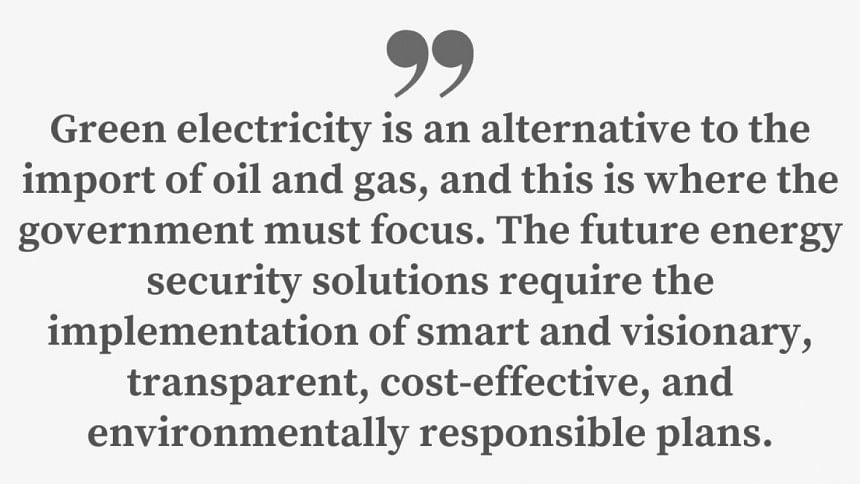
Check the corruption
There are five private solar power plants in Bangladesh, with a production capacity of only 116MW. Eighteen others are in the pipeline, with a collective capacity of 1,114MW. Despite the pitfalls of quick rental and IPP capacity charge and unit payment, solar power purchase agreements have also been termed in dollars. Purchase contracts were offered at prices that are 10-20 times higher than that in India, the daily Share Biz reported. Hence, solar power is becoming another way of draining forex reserves like the notorious quick rentals.
According to a report published by the Institute for Energy Economics and Financial Analysis (IEEFA) in September 2020, the cost of solar power generation in India and the rest of the world is gradually decreasing. India's 2019-20 auction to set up two-gigawatt (GW) solar power plants has awarded licences at record low prices, costing just Tk 2.73 (2.36 rupees) per unit (kilowatt-hour). A recent auction to set up a 2GW solar power plant in Dubai also fixed the cost of generating Tk1.42 per unit, according to the report.
In contrast, the production cost of two government-owned solar power plants in Bangladesh is Tk 13-14 per unit. The solar power produced from the private sector plants cost 13-19 cents or Tk 14-20 per unit. The Power Development Board's (PDB) data shows that the cost of power generation in private plants has been estimated at 11-17 cents or Tk 12-17 per unit, says the Share Biz report. This indicates that the country's green power sector has been set up to become a potentially loss-making sector.
Is hydrogen-based energy an option?
Production of hydrogen-based electricity is very expensive. It requires a completely new infrastructure for production, transportation, distribution, and even consumption (e.g. fuel cell cars). Utilisation of the thermal energy produced as by-products also requires integrated ecosystems.
Without creating an ecosystem, hydrogen-based energy production will become impractical in Bangladesh's corrupt public expense model. Basically, hydrogen fuel is not a solution to the current fuel crisis in Bangladesh, but it is a future possibility.
The world is moving towards using hydrogen fuel alongside solar and wind power. Essentially, hydrogen is being produced by using surplus green electricity. Where demand for green electricity is less than its supply, countries produce hydrogen from water through electrolysis, store it, and transport it to different places when needed. The huge amount of thermal energy produced in this process is used for other heating purposes (as seen in Germany).
Electrolysis is an old technology, which has not been promoted commercially before as it costs much more than the value of the electricity it produces. Because solar, wind, landfill or biomass-based power have become cheaper, the road map for hydrogen fuel generation is also developing. The "energy ecosystem" of hydrogen fuel is not limited to electricity alone. Besides thermal use, renewable hydrogen and ammonia industries are also getting integrated with it.
The question is, since Bangladesh's green electricity production rate is only four percent of the total national production, is any roadmap based on hydrogen fuel import commercially viable? Bangladesh needs ample research to find its best green energy mix and future energy potentials.
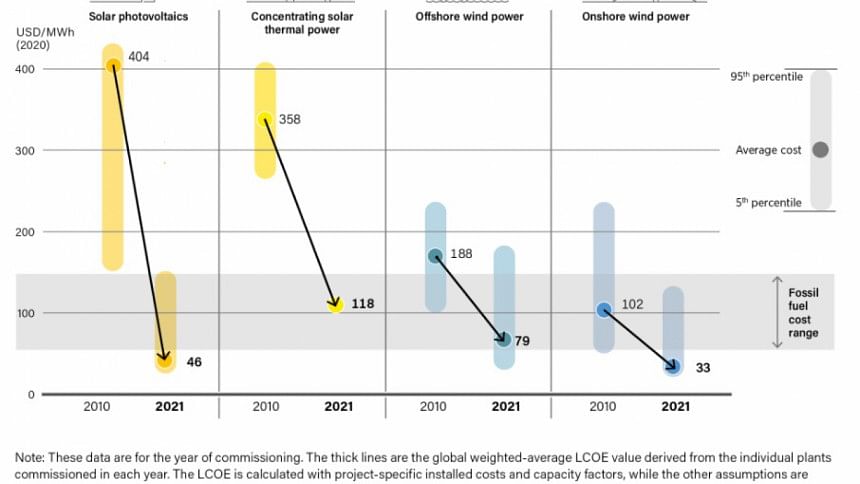
And what about hydropower?
Buying hydropower from India's Arunachal Pradesh is another option for Bangladesh. But given the water crisis centring the Farakka and Gajoldoba dams, the Brahmaputra hydroelectricity plant has strategic problems of withdrawing water from the country's main source of freshwater, the Jamuna River. Besides, it puts the biodiversity, environment and food security of Bangladesh at risk.
Other options
Surprisingly, waste and biomass power is totally neglected in the world's most densely populated country. Although it sounds unrealistic, public and private enterprises need to consider investing in solar power plants in North Africa and the Middle East and wind power plants in Western Europe to produce hydrogen and transport it back home!
Nasa's old wind potential map shows there is wind power potential in the coastal belt of Chattogram and Cox's Bazar unto the Naf River, the Chittagong Hill Tracts, and Panchagarh. In the past, the Dutch have shown interest in creating 3D wind maps. It is unacceptable that Muhuri and Kutubdia pilot wind power projects failed just due to corruption and careless planning and installation.
In the past, foreign exchange reserves have been spent to implement short-sighted and unsustainable energy models. Green electricity is an alternative to the import of oil and gas, and this is where the government must focus. The future energy security solutions require the implementation of smart and visionary, transparent, cost-effective, and environmentally responsible plans.
Faiz Ahmad Taiyeb is a Bangladeshi columnist and writer living in the Netherlands. Among other titles, he has authored Fourth Industrial Revolution and Bangladesh and 50 Years of Bangladesh Economy.

 For all latest news, follow The Daily Star's Google News channel.
For all latest news, follow The Daily Star's Google News channel. 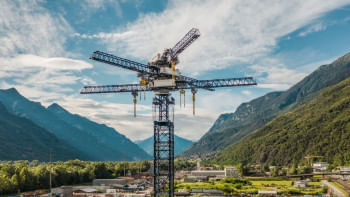







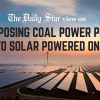


Comments